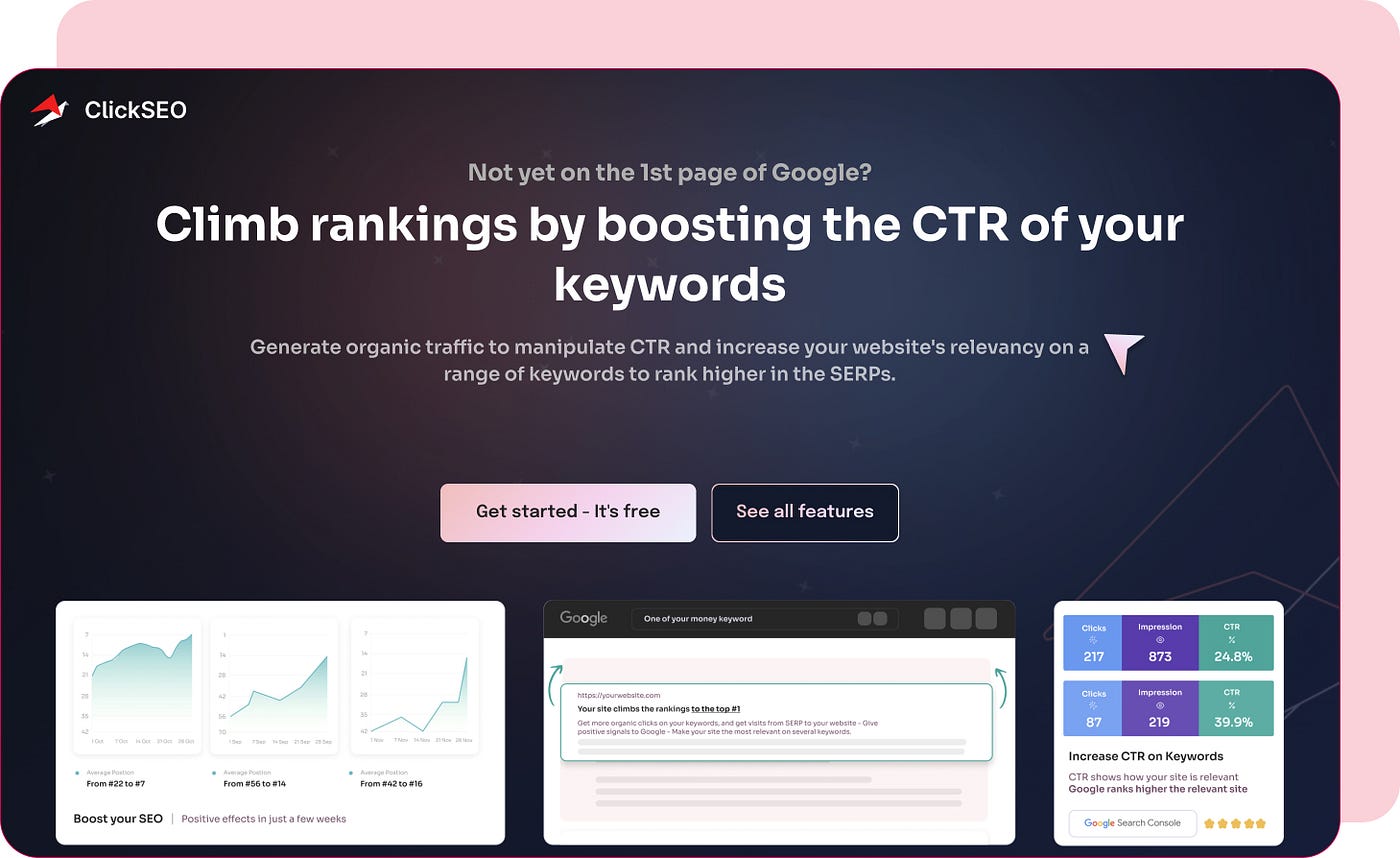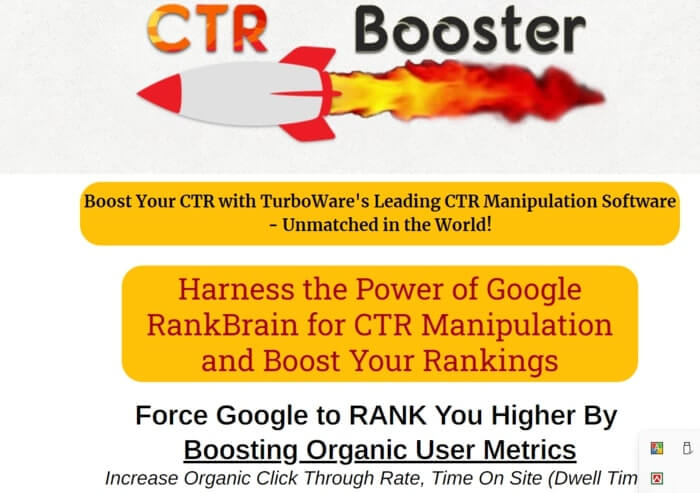Involvement Methods: The Significance of CTR Manipulation
In the realm of digital advertising and marketing, understanding and manipulating Click-Through Price (CTR) serves as a keystone for effective engagement methods. As an essential statistics that shows exactly how well material resonates with its intended audience, CTR can be influenced by various strategies, from the crafting of headings to the assimilation of visuals.
Comprehending Click-Through Rate
Although the concept of click-through price (CTR) may appear simple, it plays a vital duty in examining the performance of digital marketing campaigns. CTR is specified as the ratio of customers who click a details link to the number of complete customers that watch the connected content, typically expressed as a percent. This metric offers as a vital performance sign (KPI) for assessing the success of numerous online advertising techniques, including email marketing, social media sites ads, and internet search engine advertising.
A high CTR indicates that the content resonates with the target market, triggering them to engage better with the material. Conversely, a reduced CTR may indicate that the content stops working to capture interest or deliver value. Comprehending CTR is important for marketing professionals as it overviews the improvement of project strategies, including the optimization of ad copy, visuals, and calls to action. Additionally, CTR can influence the general roi (ROI) of digital projects, influencing spending plan appropriation and resource monitoring. By closely evaluating and monitoring CTR, marketing professionals can make data-driven choices that enhance individual interaction and drive conversions.
Elements Affecting CTR
A number of variables substantially affect click-through price (CTR), shaping how effectively material captures audience focus. One basic variable is the importance of the content to the target audience. When content aligns carefully with customers' needs and rate of interests, it naturally boosts interaction and raises CTR.
One more critical element is the quality and quality of the headline or subject line. Engaging headings that evoke inquisitiveness or offer clear value suggestions can entice users to click. Additionally, the visual allure of material, consisting of photos and formatting, plays an important duty; properly designed visuals can bring in interest and motivate interaction.
Timing additionally affects CTR; publishing content when the target market is most active can cause higher engagement rates. In addition, the placement of links within content is substantial; strategically positioning calls-to-action can guide customers towards clicking.
Last but not least, customer depend on and credibility influence CTR. Material from familiar brand names or credible resources normally amasses even more clicks, as users are more most likely to engage with content they perceive as trustworthy. By comprehending and leveraging these elements, marketing experts can boost their material approaches and optimize CTR successfully.
Methods for CTR Control
Efficient techniques for click-through price (CTR) adjustment can considerably enhance online engagement and drive web traffic. One of the most impactful approaches is enhancing headlines and titles.
An additional method involves the tactical usage of meta summaries. A well-written meta summary supplies a succinct recap of the content while attracting users to click. LinkDaddy CTR Manipulation. Making use of action-oriented language and clear value proposals can enhance CTR
Visual components additionally play a vital function. Including distinctive pictures, infographics, or videos can draw in customers' focus, making the content extra appealing. Furthermore, A/B testing different visuals can yield understandings into what reverberates most with the target market.
Lastly, leveraging social evidence, such as individual testimonials or testimonials, can construct credibility and encourage clicks. Displaying the appeal of content or highlighting endorsements fosters trust fund and attracts individuals to engage.
Determining Involvement Properly
Measuring involvement successfully is crucial for understanding the impact of CTR adjustment strategies. Engagement metrics offer insights into how individuals communicate with web content, disclosing the effectiveness of numerous strategies used to improve click-through rates. Trick efficiency indications (KPIs) such as bounce rate, time on page, and pages per session must be checked closely. These check out here metrics help evaluate whether the rise in CTR translates to significant customer engagement or simply mirrors surface clicks.

Moreover, division evaluation can recognize which target market demographics are most engaged, making it possible for tailored material delivery that resonates with certain groups. Tools like Google Analytics or warm mapping software application can envision user behavior, highlighting areas of passion or friction within the web content.
Eventually, an extensive approach that incorporates qualitative and measurable information is crucial for precisely measuring interaction. This complex examination will certainly inform the ongoing improvement of CTR adjustment methods, making sure positioning with user assumptions and enhancing total performance.
Study and Success Stories

In the tech industry, a software business made use of A/B testing on their landing web pages, exploring with various headlines and call-to-action switches. The maximized version led to a remarkable 60% surge in CTR, straight associating with an increase in trial sign-ups and succeeding subscriptions.
Likewise, a charitable company overhauled their contribution web page using emotional narration and engaging visuals. By tactically controling their web content and layout, they achieved a 35% greater CTR, translating to a considerable increase in contributions.
These case research studies highlight how thorough strategies bordering CTR adjustment can boost user engagement, eventually driving conversion prices. By understanding target market preferences and leveraging data analytics, companies throughout numerous fields can understand considerable renovations in their involvement metrics, showcasing the profound impact of thoughtful digital marketing strategies.

Final Thought
In conclusion, efficient engagement approaches are greatly dependent on the control of Click-Through Rate (CTR) as an essential metric for content success. By utilizing strategies such as enhanced headings, compelling visuals, and A/B testing, online marketers can substantially improve CTR and, consequently, audience involvement.
CTR is specified as the ratio of customers that click on a particular web link to the number of total individuals who view the linked content, commonly expressed as a percent.Numerous factors significantly influence click-through rate (CTR), forming exactly how properly material captures audience attention. When material aligns closely with users' interests and needs, it naturally improves engagement and raises CTR.
By comprehending and leveraging these variables, marketers check my reference can enhance their web content methods and optimize CTR efficiently.
In final thought, efficient engagement approaches are greatly here reliant on the manipulation of Click-Through Price (CTR) as an essential metric for content success.